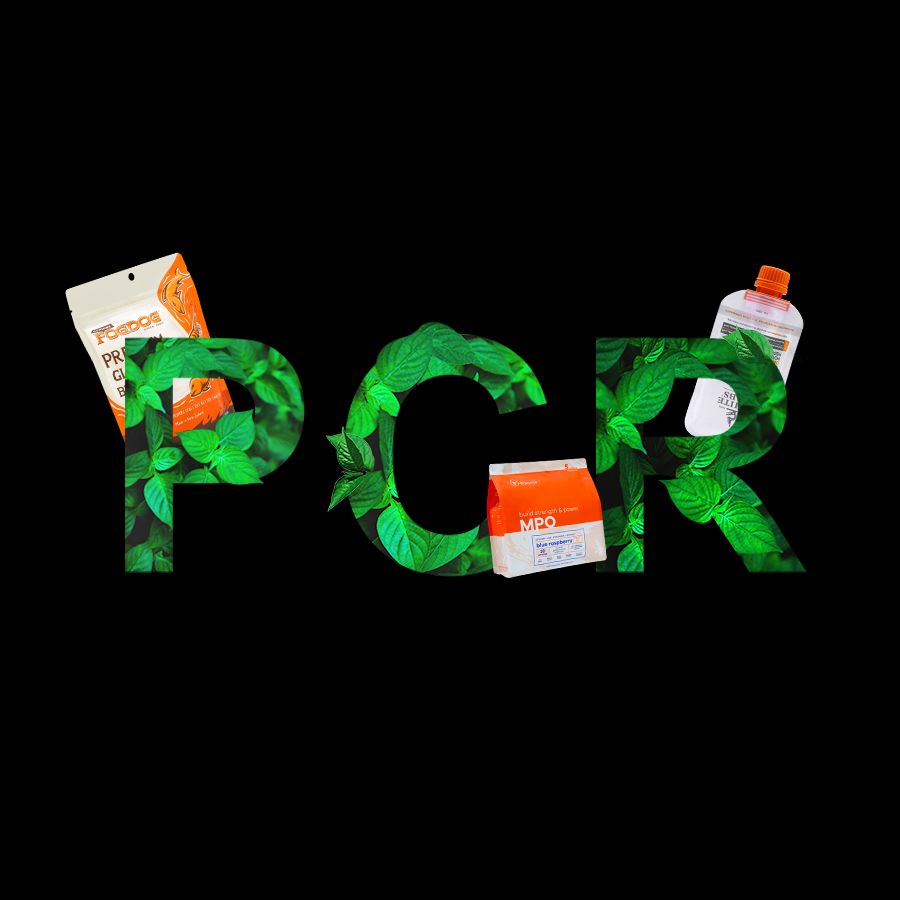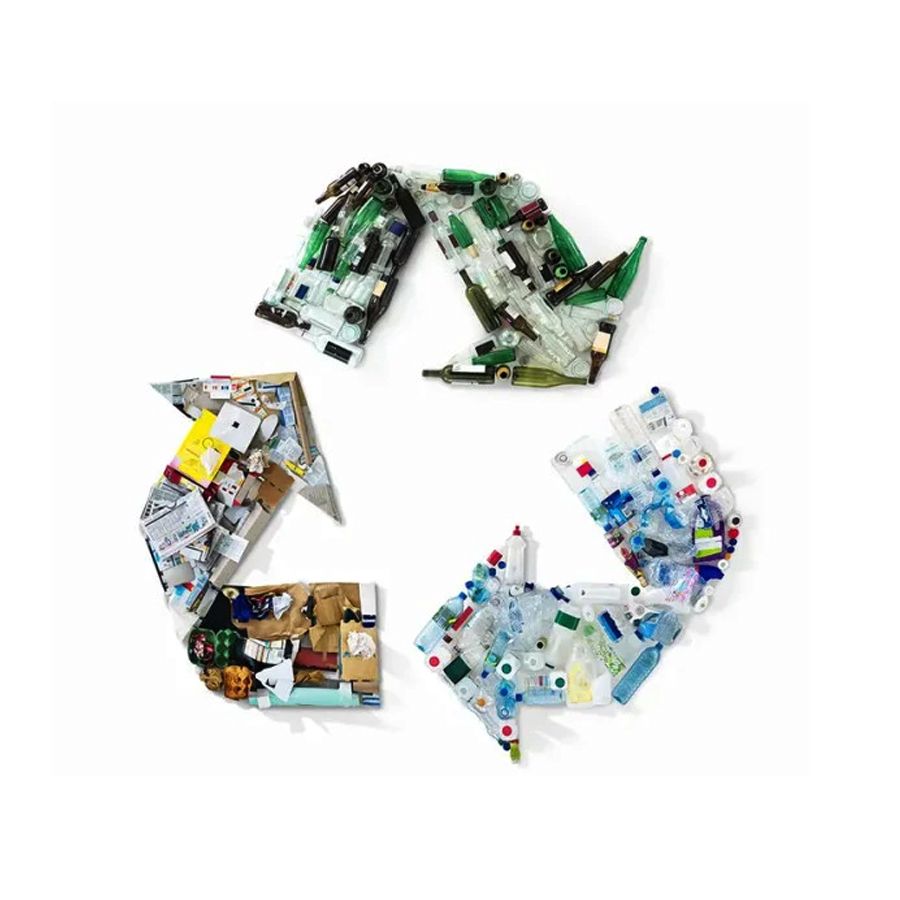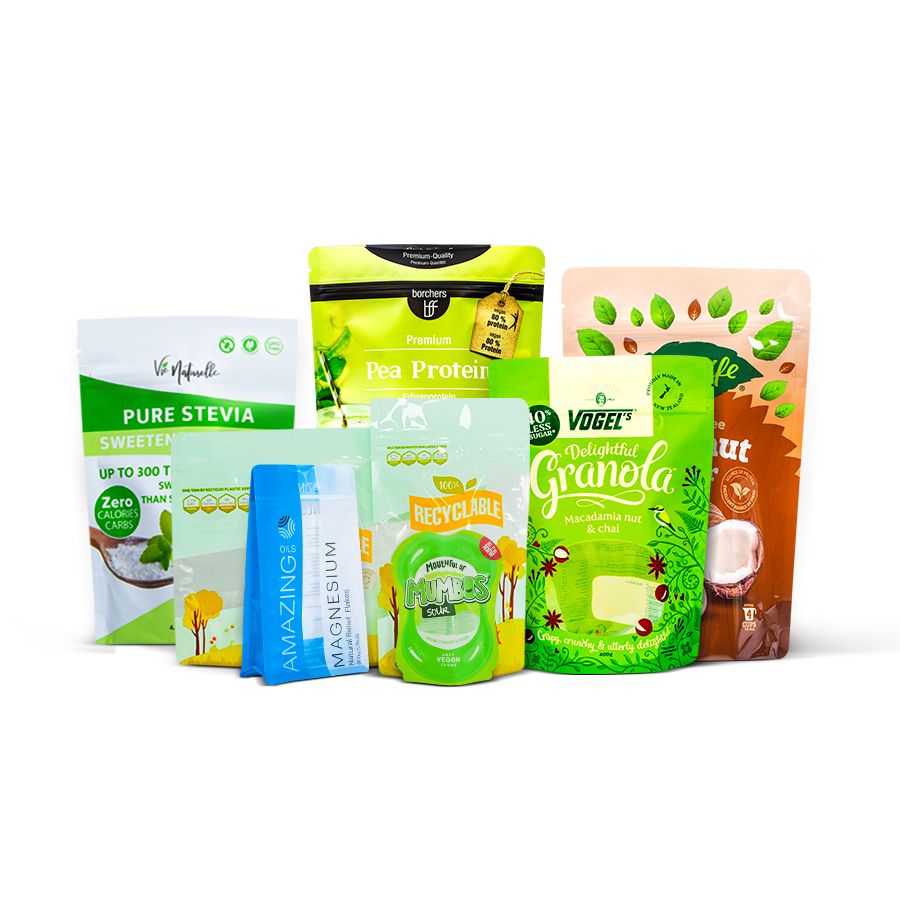The full name of PCR is Post-Consumer Recycled material, that is, recycled materials, which usually refer to recycled materials such as PET, PP, HDPE, etc., and then process the plastic raw materials used to make new packaging materials. To put it figuratively, discarded packaging is given a second life.
Why use PCR in packaging?

Mainly because doing so helps protect the environment. Virgin plastics are often processed from chemical raw materials, and reprocessing has enormous benefits for the environment.
Just think, the more people using PCR, the greater the demand. This in turn drives more recycling of used plastic packaging and further the commercial process of scrap recycling, which means less plastic ends up in landfills, rivers, oceans.
Many countries around the world are enacting legislation mandating the use of PCR plastics.
Using PCR plastic also adds a sense of environmental responsibility to your brand, which will also be a highlight of your branding.
Many consumers are also willing to pay for PCR-packaged products, making your products more commercially valuable.
Are there any disadvantages to using PCR?
Obviously, PCR, as a recycled material, may not be used for packaging of certain products with particularly high hygiene standards, such as drugs or medical devices.
Second, PCR plastic may be a different color than virgin plastic and may contain specks or other impure colors. Also, PCR plastic feedstock has a lower consistency compared to virgin plastic, making it more challenging to plasticize or process.
But once this material is accepted, all the difficulties can be overcome, allowing PCR plastics to be better used in suitable products. Of course, you don't have to use 100% PCR as your packaging material in the early stage, 10% is a good start.
What is the difference between PCR plastic and other "green" plastics?
PCR usually refers to the packaging of goods that have been sold at ordinary times, and then the packaging raw materials made after recycling. There are also many plastics on the market that are not strictly recycled compared to regular plastics, but they can still provide substantial benefits to the environment.

for example:
-> PIR, used by some to distinguish Post Consumer Resin from Post Industrial Resin. The source of PIR is generally the crates and transport pallets in the distribution chain, and even the nozzles, sub-brands, defective products, etc. generated when the factory injection molding products, etc., are directly recovered from the factory and reused. It's also good for the environment and is generally much better than PCR in terms of monoliths.
-> Bioplastics, especially biopolymers, refer to plastics made from raw materials extracted from living things such as plants, rather than plastics made from chemical synthesis. This term does not necessarily mean that plastic is biodegradable and can be misunderstood.
-> Biodegradable and compostable plastics refer to plastic products that degrade more easily and faster than ordinary plastic products. There is a lot of debate among industry experts about whether these materials are good for the environment, because they disrupt normal biological decomposition processes, and unless the conditions are perfect, they won't necessarily break down into harmless substances. Moreover, their degradation rate has not yet been clearly defined.

In conclusion, using a certain percentage of recyclable polymers in packaging shows your sense of responsibility as a manufacturer for environmental protection, and indeed makes a substantial contribution to the cause of environmental protection. Do more than one thing, why not.
Post time: Jun-15-2022
